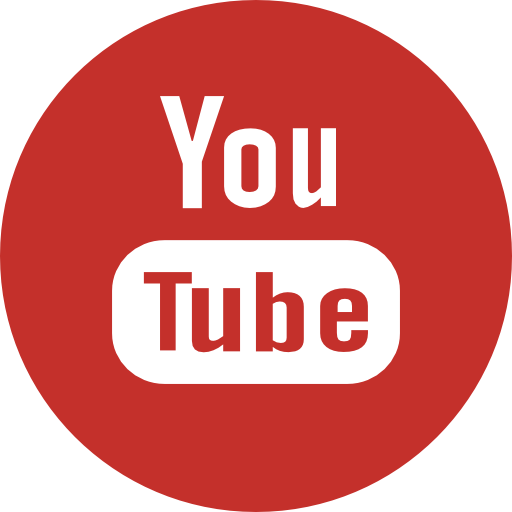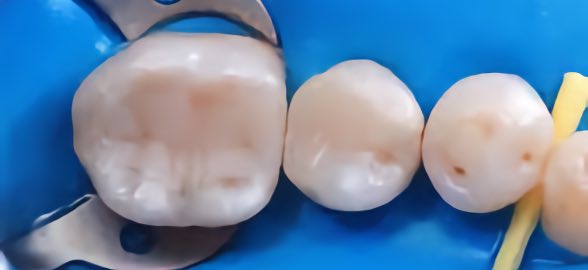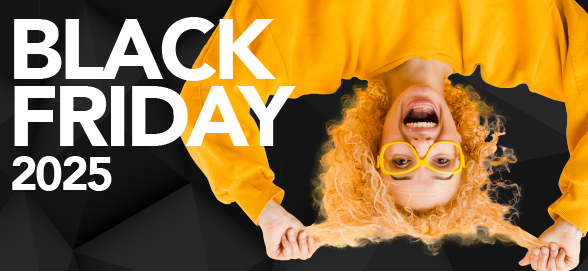Caring for the planet is everyone's task and that is why in this series of blogs on sustainability that we are preparing together with Gravity Wave we want to give you a hand with Ideas, actions and small gestures that will make your dental clinic a friendly and responsible place with the environment.
In other of our blog articles we have told you how to reduce the use of plastic and paper in your dental clinic and also what is the impact produced by the dental sector on the environment. We know that this does not leave you indifferent and we want to go further, in this blog we will talk about the correct waste management in your dental clinic.
You should also know that efficient waste management in the dental field considerably reduces the associated occupational risks, therefore, it is vitally important to classify them properly. Are you ready?
How much waste does our dental clinic generate?
Situating ourselves in the current context is key to understanding what actions we can put into practice in our dental clinic. Let's look at some numbers as an example:
If in 1 hour you attended 3 patients:
- For each patient, you and your assistant would each use a pair of gloves.
- For each patient you and your assistant would each use a mask.
- For each patient you would use a saliva ejector.
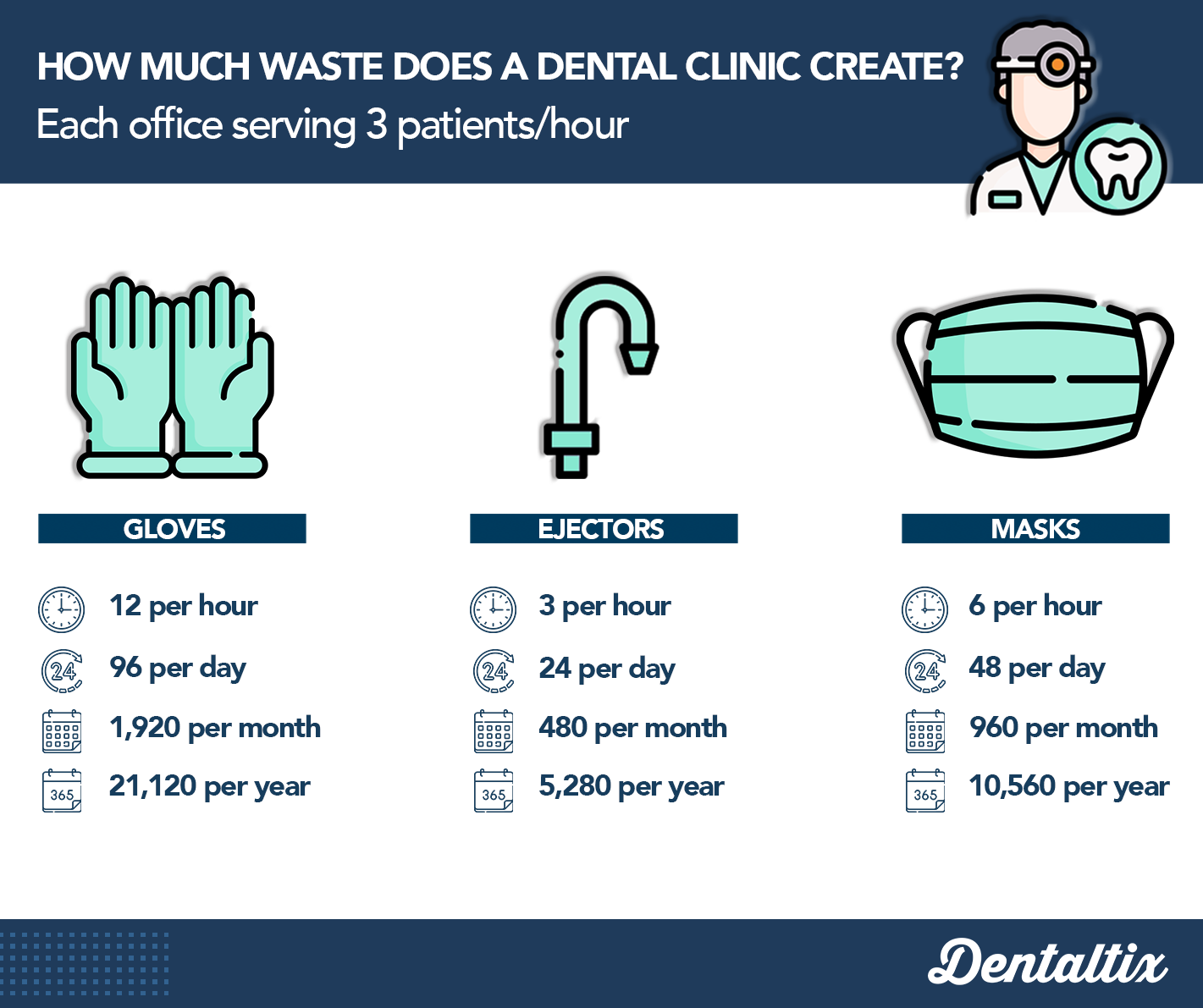
Waste management in the dental clinic
What kind of waste does our dental clinic generate and how is it classified?
The classification is the first step that we must implement for the correct management of medical waste. Although much of the waste from the dental clinic cannot be recycled, when we throw everything into the same container, we prevent the recycling of those that can have a second life.
Healthcare waste, that is, that generated by dental clinics and healthcare centers in general, is classified according to its hazard as follows:
Type I: Urban assimilable waste
It is the waste generated in activities that are not specifically sanitary, it is similar to the waste that could be generated in our homes and represents approximately 55% of the total waste generated. They do not pose an infectious risk nor are they more complex to manage. This group is subdivided in the same way that urban waste is classified, therefore, some of them can be recycled:

Blue container: Cardboard and paper
- Packages of the products we use in the clinic such as boxes of gloves, masks, composites, adhesives, whitening, etc.
- Boxes in which the clinic orders are received.
- Office paper, when it has already been used on both sides.
- Product brochures and instructions.
- Paper sterilization bags (separate the paper from the plastic)
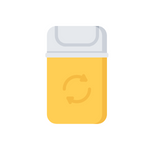
Yellow container: Containers
- Polypropylene or polyethylene disposable caps, shoe covers and gowns
- Plastic bottles and containers
- Metal containers such as trays or aluminum foil
- Aerosols such as instrument fresheners or lubricants
- Plastic sterilization bags (separate plastic from paper)
- Bricks
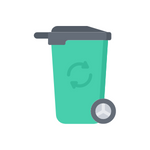
Green Container: Glass
- Glass bottles
- Glass jars from urban waste.
- Glass jars of dental products such as cements, retraction cords, eugenol, etc. (plastic caps must be removed)
- Dappen glasses
- Glass tiles

Grey Container: Leftovers
- Ceramic crowns
- Uncontaminated gloves and masks
- Impression material such as silicones and alginates
- Acrylics for full and partial dentures, provisional teeth, splints.
All waste that is not recycled can go into the gray bin.
This fraction of non-reusable waste is deposited in landfills or landfills.
Many of the waste generated in the dental clinic belongs to group I and without making great efforts we can separate it and considerably reduce our environmental impact. We encourage you to put it into practice!

Clean spot
In this category you will find waste that usually cannot be disposed of in conventional containers. Some of the objects from your dental clinic that you can take to a clean point are:
- Furniture
- Electronic devices
- Computers
- Batteries and batteries
- Mirrors
- Printers
- Ink cartridges
- Thermometers
- Amalgam remnants
- X-rays
- Toothbrushes
- Invisible aligners
You should always keep in mind that not all collection points accept all kinds of objects, we recommend you find out about the closest ones and before going, check that they accept the waste you need to bring.

Type II: Non-specific medical waste
They are biological materials and products typical of healthcare activities and also the materials that come into contact with them or those that are destined for their disposal. This waste comes from dental activity in non-infectious patients and represents around 45% of the waste from dental clinics. Among them we can find:
- Gloves
- Masks
- Bib napkins
- Cottons
- Disposable gowns
- Disposable material
- Gauze pads
- Plaster models
Because it is uncontaminated waste, you can recycle those that are made of paper, plastic or glass and the rest must be collected in rigid, semi-rigid containers or single-use bags with a volume of less than 90 L, resistant to loading and perforation, with hermetic closure.
Type III: Specific sanitary waste
This type of waste, like those of group II, are also materials and biological products typical of healthcare activities and the materials that come into contact with them differ from the previous group in that they do pose a risk of significant infection for people who come into contact with them. We will find in this category:
- Waste containing infectious agents
- Needles and sharp material
- Endodontic instruments
- Strawberries
- Suture needles
- Scanning probes
- Cultures and stocks of infectious agents
- Minor anatomical remains
- Teeth, biopsy remains, or tissue remains
This type of waste must also be collected in rigid, semi-rigid containers or in approved bags and in the case of waste such as needles and sharp material, these must be placed in special, imperforable and impenetrable single-use containers.
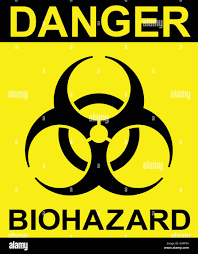
It is necessary and very important to externally label the containers of these wastes as "infectious risk waste" with biorisk signage. Finally, these type III wastes must be managed by companies specialized in the treatment of sanitary wastes.
Es necesario y muy importante rotular externamente los contenedores de estos residuos como “residuos infecciosos de riesgo” con la señalética de biorriesgo. Finalmente, estos residuos tipo III deben ser gestionados por empresas especializadas en el tratamiento de residuos sanitarios.
Tipo IV: Residuos tipificados según normativas específicas
Esta es la categoría que más cuidado requerirá ya que podemos encontrar residuos peligrosos de diferente procedencia, tales como:
Residuos químicos
- Medicamentos
- Residuos citostáticos
- Metales pesados
- Líquidos relevadores y fijadores de radiografía
- Desinfectantes a base de aldehídos
Residuos de naturaleza radioactiva
Restos humanos y residuos anatómicos
Estos residuos al ser tipificados como peligrosos deberán depositarse en contenedores de material rígido y resistente. Y en el caso de los residuos radioactivos deberán ser envasados de acuerdo a su propia normativa. Estos deberán etiquetarse según el riesgo de peligrosidad que conlleven.
Entonces, ¿Por qué es tan importante clasificar los residuos de la clínica dental?
La clasificación y gestión de los residuos producidos en la clínica dental es una tarea importante y fundamental. Nos ayudará a reducir los riesgos laborales por las posibles contaminaciones cruzadas al estar en contacto con los residuos y también contribuirá a hacer de nuestro espacio de trabajo un lugar más amigable con el medioambiente.
Cuando tiramos todo al mismo contenedor no permitimos a los materiales reciclables tener una segunda vida, es por ello que, en el próximo artículo de nuestra serie de blogs sostenibles, te enseñaremos sobre la gestión específica de cada uno de los productos más habitualmente utilizados en la atención odontológica y además te daremos tips para encontrar siempre la alternativa menos dañina para el planeta. ¡Atento, no te lo puedes perder!
Las pequeñas acciones generan grandes cambios y son dignas de imitar, tu clínica dental puede convertirse en un referente eco-friendly y empezar a hacer del planeta un mejor lugar para vivir. ¡Adelante!
Gracias por leernos y si tienes preguntas o comentarios no dudes en contactarnos. Si quieres estar siempre actualizado en las últimas novedades y tendencias del sector dental, te esperamos en nuestros próximos artículos y en nuestras redes sociales. ¡Hasta pronto!


